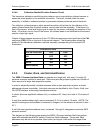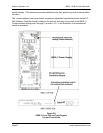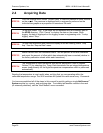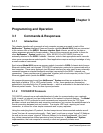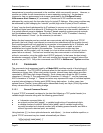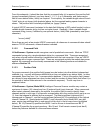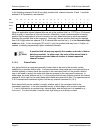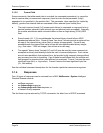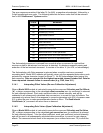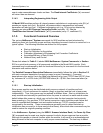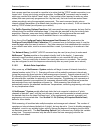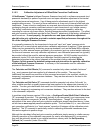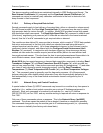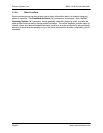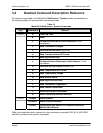
Pressure Systems, Inc. 98RK-1 & 9816 User’s Manual©
Page 34 www.PressureSystems.com
3.1.3.5 Format Field
Some commands, that either send data to a module (as command parameters), or cause the
host to receive data (via command’s response), have an extra format parameter (f digit)
appended to (or specified in) the position field. This parameter, when specified (or implied by
default), governs how internal data are converted to/from external (user-visible) form.
● The most common format (f=0) causes each datum (in command or response) to be a
decimal number externally (with optional sign and decimal point as needed). Internally,
the module sets/obtains each converted datum to/from a single binary (32-bit) IEEE
float.
● Some formats (f=1, 2, 5) encode/decode the internal binary format to/from ASCII
hexadecimal external form. Some of these “hex dump” formats provide an external hex
bit map of the internal binary value (float or integer as appropriate). Format 5 may
encode/decode the internal float value to/from an intermediate scaled binary integer
(e.g., float value * 1000 into integer, then to/from a hex bit map).
● Two special “binary dump” formats (f=7 and f=8) may be used by some commands to
accept/return binary data directly from/to the user’s command/response. Such values
are not user-readable in their external form, but provide highly compact storage without
any accuracy loss due to formatting. Use of these formats allows both the module and
host program to operate at their most efficient low overhead. Format 7 returns the most
significant byte first (i.e., big endian). Format 8 returns the least significant byte first
(i.e., little endian).
See the individual command descriptions for the formats a particular command recognizes.
3.1.4 Responses
Four (4) types of responses can be returned from a 9816 NetScanner
™
System Intelligent
Pressure Scanner module:
● an Error response,
● an Acknowledge response,
● an Acknowledge with Data response, or
● a Network Query response.
The first three may be returned by TCP/IP commands, the latter from a UDP/IP command.



